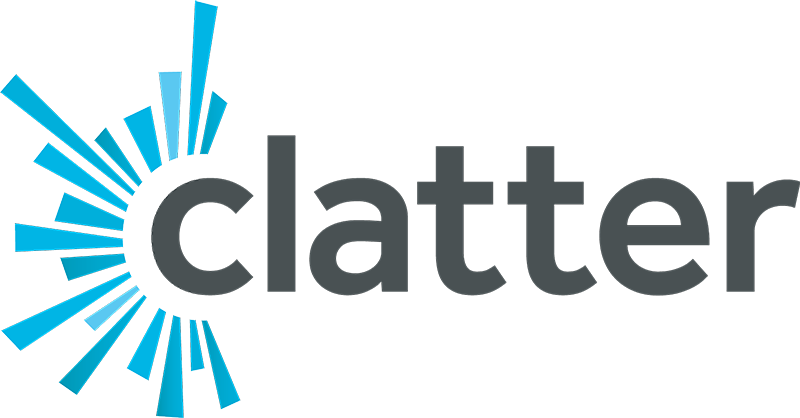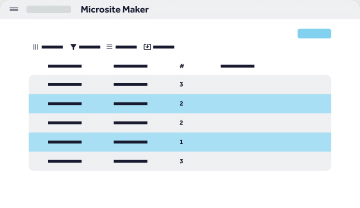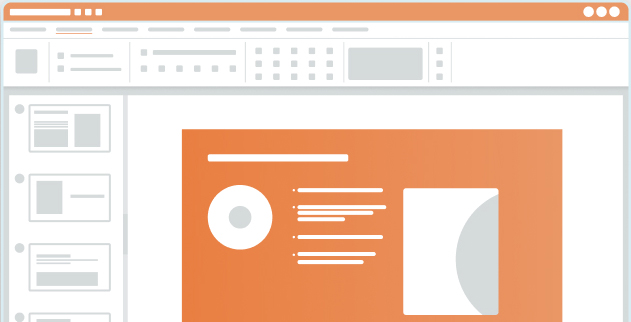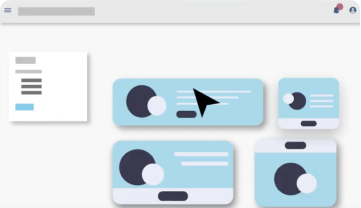Picture this: It’s Tuesday afternoon, and Simone, the marketing director at a 200,000-member regional health plan, gets the call she’s been dreading. “We need a rate guide for that major employer group by Thursday,” says the sales director. “They’re also considering that leading national healthcare company.”
To streamline this process and reduce the stress, many small health plans are turning to report automation tools.
Simone’s heart sinks. What should take two hours will become a 15+ hour nightmare. She’ll spend the next two days buried in Excel spreadsheets, copying and pasting data into PowerPoint slides, and praying she doesn’t make a pricing error that costs them the deal.
By Thursday, she’ll deliver a rate guide that looks like – well, an Excel printout. Meanwhile, the major national insurer’s polished, professional materials will make her health plan look like they’re operating out of a garage.
Sound familiar? This nightmare plays out every week across small health plans nationwide.
The Hidden Cost of Manual Rate Guide Creation (Why Small Health Plans Should Embrace Report Automation Tools!)
Small health plans face a brutal reality: they’re drowning in manual document creation. While major insurers (think leading national healthcare companies) generate professional rate guides in minutes, smaller plans burn massive amounts of time on a broken process that’s killing their competitiveness.
Here’s how the time breakdown typically looks for a single rate guide:
Data gathering: 4-6 hours pulling information from multiple systems – actuarial databases, network directories, and benefit platforms that don’t talk to each other.
Excel formatting: 3-4 hours making spreadsheets look presentable, formatting cells, and ensuring calculations are correct.
PowerPoint assembly: 5-7 hours copying and pasting data, adjusting layouts, and trying to make everything look professional.
Review cycles: 2-3 hours of back-and-forth corrections as stakeholders catch errors or request changes.
Total: 15+ hours per rate guide.
For health plans creating 8-10 rate guides monthly, that’s over 120 hours – or three full weeks – of marketing team time spent on formatting instead of strategy.
The real tragedy? This time drain directly impacts win rates. Research shows that wasteful administrative spending costs U.S. healthcare up to $570 billion annually, with administrative inefficiencies creating massive competitive disadvantages across the healthcare industry.
Learn more about data driven document creation.
Why This Problem is Getting Worse
I see this challenge constantly at Clatter. Larger enterprises have millions to spend on solutions like Adobe Experience Manager with full internal teams. Small health plans can’t afford enterprise-level solutions or dedicated design teams.
This creates a David vs. Goliath situation where small health plans fight major insurers with stone tools while their competitors wield professional automation.
The Enterprise Advantage
Major national insurers have cracked the code. Their automated proposal systems generate professional materials in minutes, not hours. They maintain consistent branding, eliminate manual errors, and their marketing teams focus on strategy instead of PowerPoint formatting.
These enterprise systems automatically handle variables that make each proposal different – plan types, member counts, network configurations, and employer-specific customizations. When a sales rep needs a rate guide, they click a few buttons and generate materials that look like they came from a Fortune 500 marketing department.
Small Plan Disadvantages
Meanwhile, smaller health plans struggle with legacy processes inherited from the pre-digital era. Marketing directors who should be developing member engagement strategies instead spend 70% of their time on manual tasks that enterprise competitors automated years ago.
The focus mismatch hurts everywhere. Actuaries waste time on presentation formatting. Marketing teams can’t develop innovative coverage solutions because they’re buried in Excel. And prospects notice the difference.
The Competitive Reality
Here’s the harsh truth: prospects judge your capabilities by your materials. When a benefits manager compares a polished national insurer proposal against a rate guide that looks like an Excel printout, professional presentation equals perceived reliability. Small health plans can’t afford to lose deals on factors that have nothing to do with coverage quality or network strength.
The Automation Solution Framework
The good news? Small health plans don’t need enterprise budgets to achieve enterprise results. Through a customized set of rules, the different variables that make these proposals different are completely automated. For example, you may be offering different types of plans, different numbers of plans – when you set up your templates and rules from the onset to accommodate these variations, you’re setting yourself up for success.
While larger enterprises may have millions of dollars to spend on solutions like Adobe Experience Manager which requires full internal teams to manage, a solution like Clatter can do the same thing for smaller health plans at a fraction of the cost but with the same speed and attention to detail you get from automating processes.
Step 1: Setup Your Rules Once
Smart automation handles the variables that make rate guides different. Configure your system to understand plan variations – HMO, PPO, and high-deductible options. Set member count thresholds for different pricing tiers. Define customization points like prospect logos, specific benefits, and regional network differences.
The key insight? Whether you’re offering three plans or five plans, the system knows how to handle the variations automatically.
Step 2: Connect Your Data
Integration eliminates the manual data gathering nightmare. Instead of pulling information from multiple systems, automated solutions connect directly to your actuarial databases, network directories, and benefit platforms. This eliminates data re-entry, reduces errors, and ensures rate guides update automatically when underlying information changes.
Step 3: Generate in Minutes
The final step transforms everything. Click, customize, and export professional rate guides that rival major insurer materials. Prospect-specific customization happens without starting from scratch. Consistent branding appears automatically.
Most importantly, your marketing team refocuses on strategy, member experience, and winning deals instead of fighting with PowerPoint.
Real Results: How Three Health Plans Fixed This
Hypothetical Regional Plan (150k members): Before automation, this marketing team spent 20 hours per rate guide, creating 8 guides monthly – 160 hours of manual work. After implementing automated rate guide creation, they reduced this to 2 hours per guide, freeing up 144 hours monthly. The marketing director now focuses on member engagement strategies and won three major employer deals that previously would have gone to major insurers based purely on proposal quality.
Hypothetical Community Plan (75k members): When competing against a major national healthcare company for a large employer group, this plan’s automated system created a custom rate guide in 45 minutes versus the previous 12-hour manual process. Professional materials helped them win a $2M annual premium deal – proving that presentation quality directly impacts win rates.
Hypothetical Startup Plan (25k members): With a one-person marketing department drowning in manual work, automation eliminated weekend rate guide preparation. The marketing director stopped working evenings on PowerPoint and started developing growth strategies that expanded membership by 15%.
Stop Burning Hours on Rate Guides
Research shows that document-related challenges result in a 21.3% productivity loss, with employees often spending hours recreating documents they can’t find. For health plans, this translates directly to lost deals and missed opportunities.
Small health plans shouldn’t lose deals because of presentation quality. You have actuarial expertise, network relationships, and member focus that major insurers can’t match. Your coverage innovations and community connections deserve professional packaging that wins deals.
The bottom line is simple: administrative simplification can save a quarter-trillion dollars in U.S. healthcare, but automation levels the playing field. You can achieve enterprise-level materials without enterprise-level costs.
Ready to stop burning 15+ hours per week on rate guides? Your marketing team has better things to do than fight with Excel spreadsheets. See how automated rate guide creation can transform your competitive position and free up your team to focus on what really matters – winning deals and serving members.
Transform your rate guide process from a 15-hour nightmare into a 1-hour competitive advantage.




